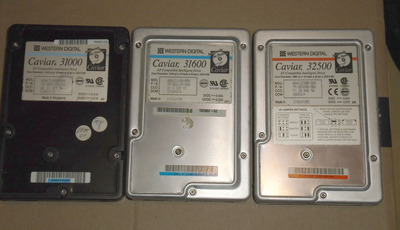First post, by berbil
First-time poster here, but I've been lurking for a while! What might cause bad sectors on a hard drive to randomly appear and then subsequently move around? I understand what they are and why they occur, but I encountered a strange situation with two used drives that I recently purchased. Both sellers provided reports and screenshots showing that the drives were clean with zero bad sectors (log files still on the disks). After I received the drives, I repartitioned and formatted them. To my surprise, both drives now display bad sectors in the last 5% of the allocation area. They're 1995-era Western Digital Caviar drives.
I've since done a variety of scanning and "repairs" using WDDIAG, SpinRite, and regular old ScanDisk. The bad sectors seem to move around. An initial DOS format will usually flag some bad spots. Then, I'll run WDDIAG, which will find the bad sectors and indicate that the "maximum number of reallocations has been exceeded." When I run ScanDisk, about half of the bad sectors are miraculously gone. After that, an in-depth scan and repair using SpinRite will clear up another 25% or so. If redo the whole process from scratch, the overall statistics are the same, but the bad sectors are now in slightly different locations (but are still confined to the same 5% region at the end of the drive at the upper cylinders). The outcome is the same on two different computers with different IDE controllers and cabling.
I've been around this stuff since the very early '90s, so I'm no stranger to mechanical disks, but I've never seen this behavior before. (Admittedly, I have zero experience with the failure modes of 25-year-old hard drives.) I'm suspecting that the drives may have been damaged in shipping, with the usual bumps and jolts lodging some internal debris loose and affecting the edge of the platters. That might also explain the moving bad spots, if something were dragging across the disk. It's just strange that it would happen to two drives in the span of a week.
Has anyone seen this sort of problem before?
